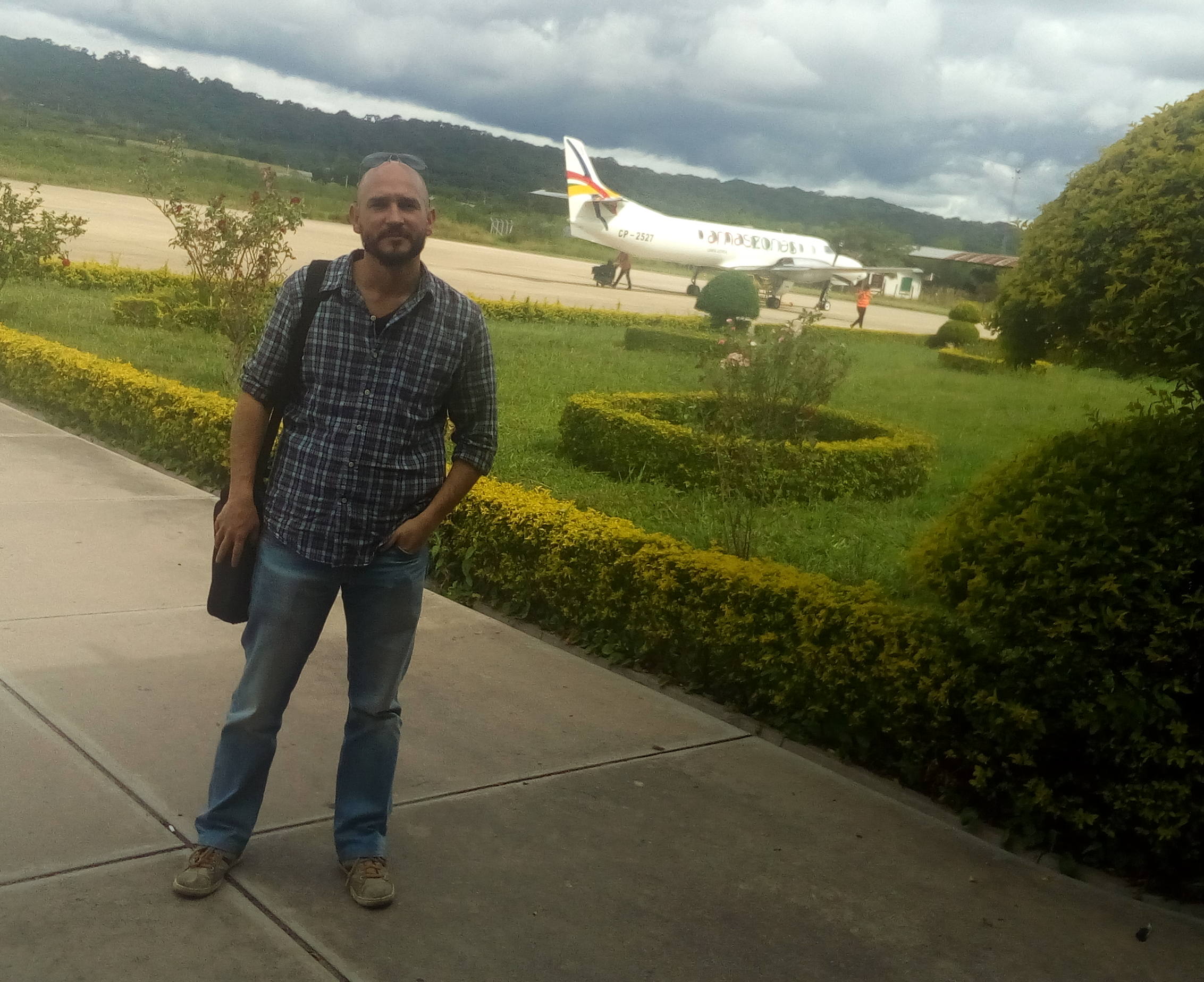-
25 October 2018
Category : Interview
“Coca leaf production and consumption are deeply rooted in Bolivia”
Javier Navarro, National Police inspector and technical expert on the FIIAPP programme to support the Bolivian special force fighting drug trafficking, shows us in this interview how complicated it is to pursue the production and illegal trafficking of coca leaf in Bolivia, where it is grown and consumed legally
 Javier Navarro in a photo taken in Bolivia
Javier Navarro in a photo taken in BoliviaHow do people see the coca leaf in Bolivia?
The production and consumption of coca leaves are deeply rooted in society and its customs. The Plurinational State of Bolivia has acknowledged that there are 20,000 ha of coca plants being grown in two main areas: Las Yungas, in the department of La Paz, and Chapare, in the tropical region of Cochabamba. Producers are registered and are entitled to grow one “cato” of coca (1,600m2). The coca leaf they grow then goes to a cooperative and from there onto the legal market, either for personal consumption, called “picheo”, i.e., balls of coca leaves are put into the mouth and the juice sucked out of them, or for coca mate, sweets and other products. All that comes from these areas is considered legal cultivation. The Government also has to manage the eradication of coca leaves in places where their cultivation is not authorised.
How does it become illegal?
Logically, not all the production goes onto the legal market; some of it follows parallel routes and is used to make coca paste. The paste is the result of adding other elements to the coca to produce cocaine hydrochloride.
Also, it should be remembered that Bolivia is not only a producer, it is also a transit country, as paste arrives from Peru, another producing country that has some 45,000 ha of coca cultivation.
So, what is the profile of a coca leaf producer in Bolivia?
It is, purely and simply, that of a farmer, who, with one “cato” of coca, earns just enough to make a modest living. That is the reality and what I see. Can this coca leaf subsequently be processed or go to an illegal market? It may do, but the producer par excellence does not have the profile of a trafficker.
The producers produce it as part of their basic subsistence economy, to live decently with their families, and producers are different from traffickers. Maybe this would be the smallest link, the lowest on the chain, where a producer is making it illegally.
What resources does Bolivia have to prevent illegal trafficking?
The government has the Bolivian police force, especially the Special Forces to Combat Drug Trafficking, a vital ally in the fight against drug trafficking. These are special squads that are found all over Bolivia and they try to prevent drug trafficking from intensifying.
What is the role of the project in this network?
The project tries to provide support and strengthen departments and institutions linked with drug trafficking by bolstering their skill sets through technical assistance (legal, protocol, manuals), for which we co-opt experts in the short term from the National Police and Civil Guard in addition to French experts. The latter give assistance in very specialised areas, to strengthen the aspects that they consider necessary. Specifically, five themes are dealt with: criminal investigation, intelligence, borders and airports, and related crimes (money laundering and people trafficking and smuggling).
What are the prospects for the future?
The project is solid and well established; in fact, it is the institutions that turn to it so that they can become stronger in the areas they consider the weakest. This year, we have been working on all the areas to consolidate them and strongly reinforce them and next year will see the final implementation.
We also hope that, logically, when this first part of the project ends there can be a second part, as this would be very important, so that we could continue to strengthen these areas and move forward and improve all the Bolivian institutions.
The views and opinions expressed in this blog are the sole responsibility of the person who write them.




